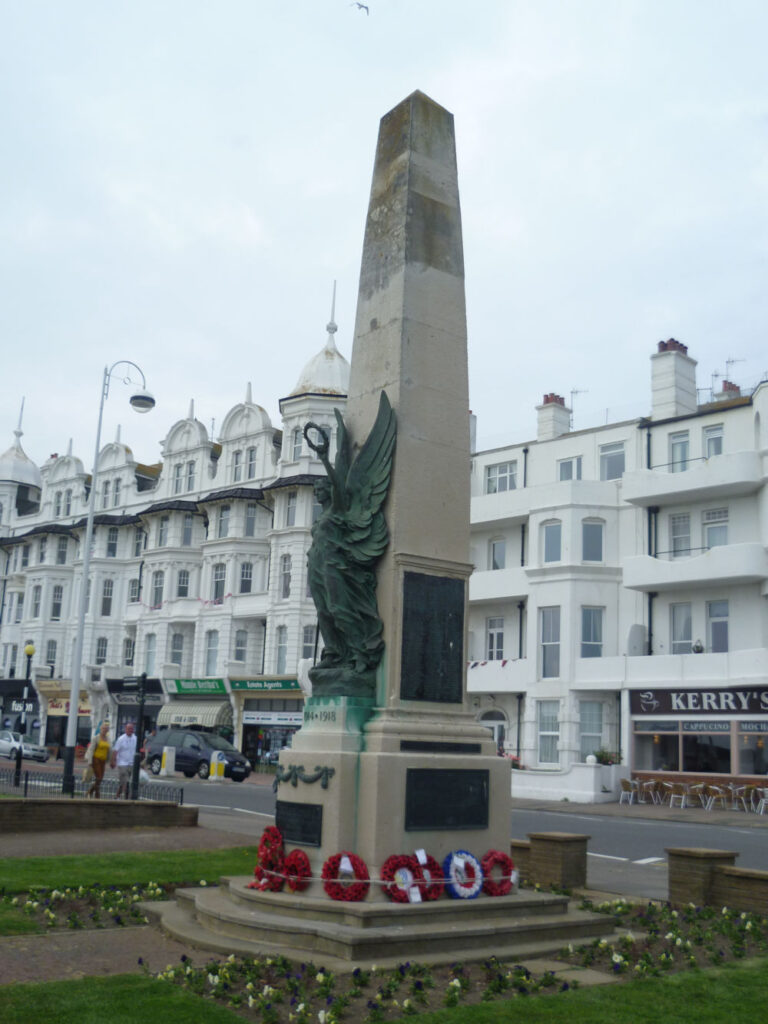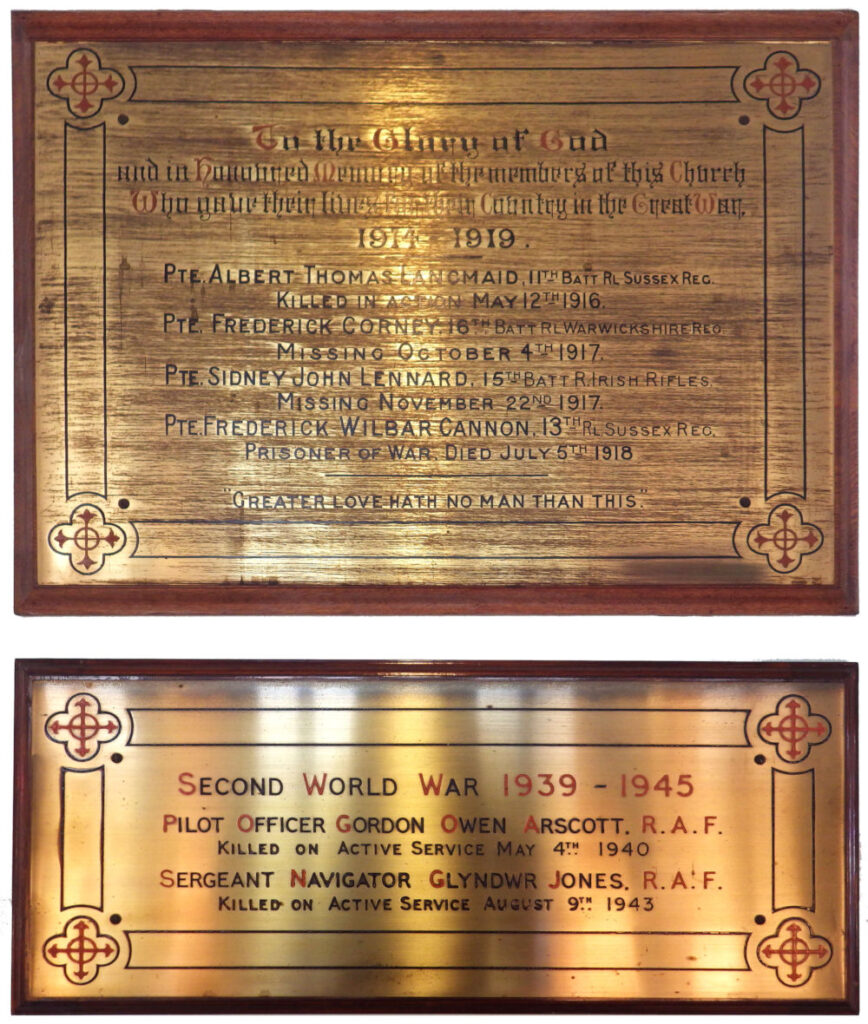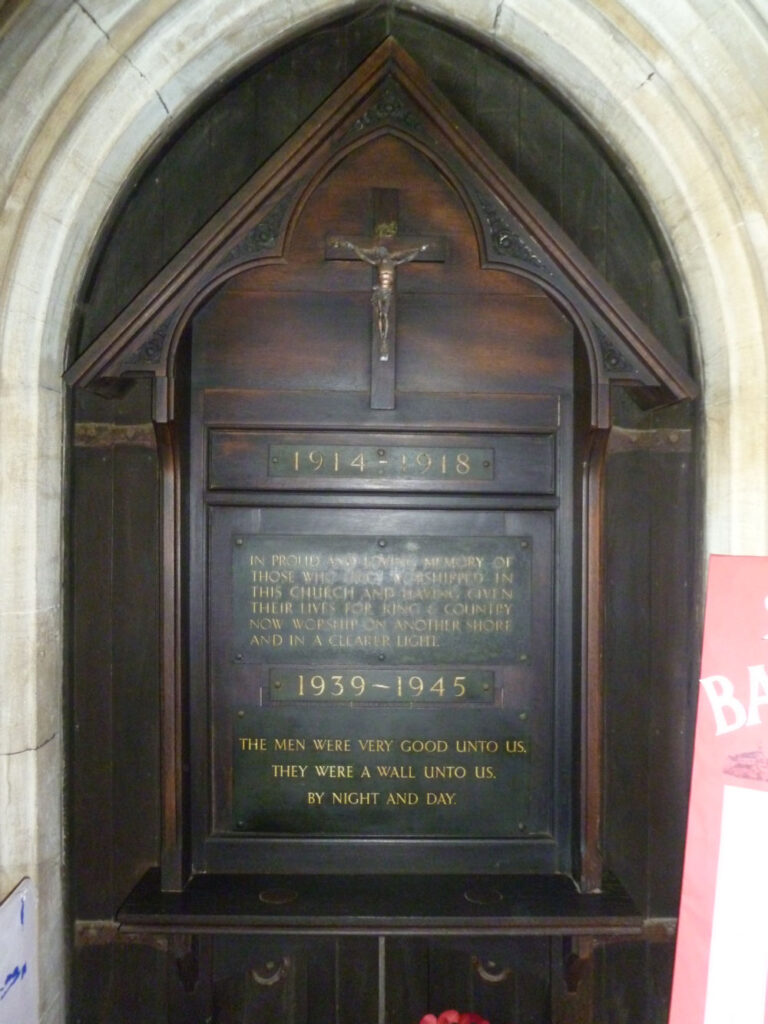War memorials and remembrance had become an established feature of 20th century life following the First World War.
In Bexhill the town memorial was unveiled in December 1920 and Little Common unveiled their memorial in November 1920. In addition churches and various associations also unveiled memorials to those with affiliations.
It can be imaged that the remembrance services in 1939 were particularly poignant in view of a renewal of war. The local Poppy Appeal generated 12% more income than the previous year. With the return of peace in 1945, the silver jubilee of the Poppy Appeal Day, raised over £800, over half of which was through street collections. Separately Little Common raised £172, 50% more than in 1944.
The 1945 Armistice Day event drew a large crowd. The signal for the two minutes silence was given by the air raid siren at the Town Hall, rather than the firing of maroons, as was done pre-war. In the afternoon a procession led by three bands marched to the town memorial and laid wreaths as well as the St Mary Magdalene and St Barnabas church memorials en route. This was followed by a service at the De La Warr Pavilion, every seat being occupied.
At Little Common a band followed by a contingent of Royal Marine Commandos marched to St Mark’s Church for a service, followed by a procession to the village war memorial. The sun shone on the many people present who planted miniature crosses by the memorial.
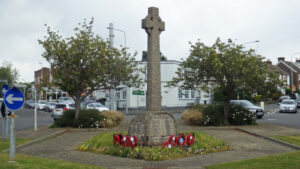
The town memorial also featured in the September 1946 commemoration of the Battle of Britain. Over 150 ex-service men and women took part in the parade followed by a service at St Barnabas Church. The previous day a massed flypast of over 300 aeroplanes toured south east England. American P-47 Thunderbolts are known to have flown over Bexhill.
The 1946 Poppy Appeal maintained the level of 1945 with the whole Bexhill area giving at least £1002. 1946 was the year that Armistice Day was renamed Remembrance Day. Otherwise the ceremonies and even the weather were the same.
The first known church memorial to the fallen of the Second World War was that of St Andrew’s Church which was unveiled in February 1948. It lists both civilian and armed forces dead and with the closure of At Andrew’s Church, it is now at St Michael’s Church.
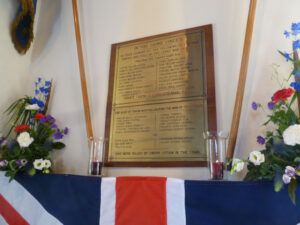
In respect of public memorials, the British Legion in Little Common took responsibility for the fundraising to add the names of the fallen of the Second World War to the Little Common memorial and were so successful that a surplus of £10 was donated to the Poppy Fund.
In respect of the town memorial, in November 1947 work began on a temporary reconditioning of the First World War plaques. In August 1948 a general memorial plaque, costing £90, was installed on the south wall of the town memorial. Prior to this, in the June, the Mayor made his appeal for names of the dead to be made known. Making the assumption that space was available for 300 names – at a cost of £2 each – he appealed for donations to fund the necessary £600. No official list of dead existed so that the Mayor relied on the co-operation of the public and local bodies. The result was the May 1949 unveiling of the Second World War plaques with due ceremony. There were 110 names [including a duplication].
One year later 10 additional names were added in plaques on the eastern and northern walls.
With no records of the Mayor’s effort there is an unexplained mismatch between a 1945 Bexhill Observer list which had 131 names and the World War Two memorial panels themselves which list 38 names not on the Bexhill Observer list.
Current research reveals a total of 265 Bexhill Second World War armed forces dead.


